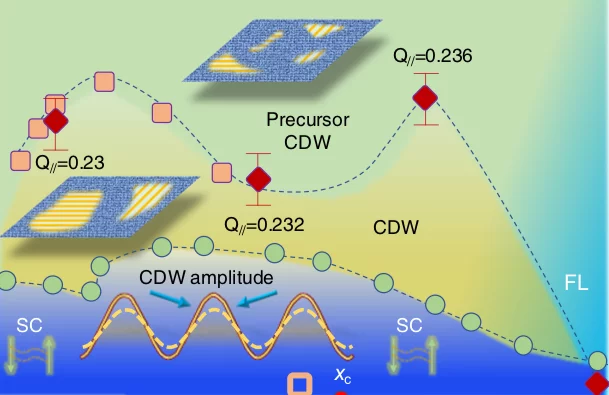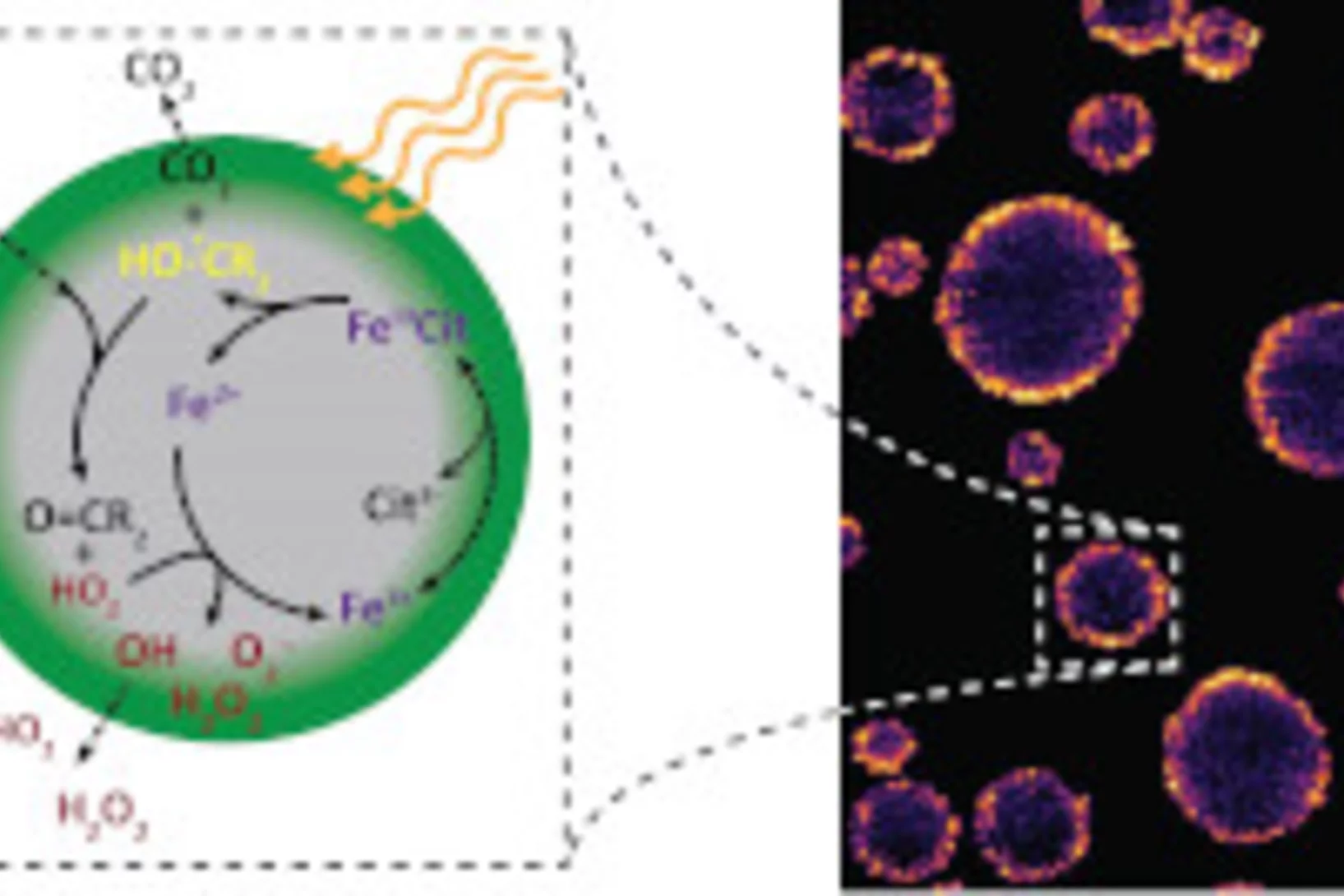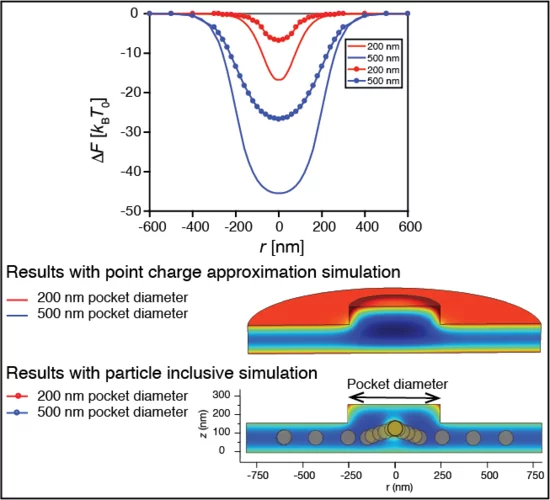Au PSI, plusieurs projets se consacrent à des questions de recherche importantes autour du coronavirus Sars-CoV-2 et des maladies qui en résultent. Nous vous informons sur les activités et les projets, par exemple sur les analyses de tissus pulmonaires, sur la production de protéines et d'anticorps ou sur les idées de nouvelles recherches sur le Covid-19.
Liens utils
New class of substances for REDOX chemistry
The compounds known as ‘pyrazinacenes’ are simple, stable compounds that consist of a series of connected nitrogen-containing carbon rings. They are suitable for applications in electrochemistry or synthesis, as the researchers describe in the science journal Communications Chemistry. They were first designed, synthesized and chemically characterized in solution by the Hill team and carefully investigated by Scanning Tunneling Microscopy and Surface Chemical Analysis. The compounds have been shown to reversibly release and accept electrons and arrange themselves differently depending on the oxidation state. Interestingly, the oxidation and reduction reactions of the pyrazinacenes are not only affected by a chemical impulse, but can also be stimulated by light so they can be considered photo-redox active.
Using X-ray emission spectroscopy to study the electronic properties of single atom catalysts
Single atom catalysts hold great promise as O2- or CO2-reduction electrocatalysts, but a deeper understanding of their active sites’ structure and electronic properties is needed in order to render them sufficiently active and stable. To this end, we have used X-ray emission spectroscopy to determine these catalysts’ electronic configuration, and performed in situ measurements that unveil the effect of potential on this key feature.
Hercules School 2021 at PSI
During the week of March 15 – 19, we had the pleasure to welcome 20 international PhD students, PostDocs and assistant professors at PSI, taking part in the first virtual Hercules School on Neutrons & Synchrotron Radiation.
Stockés en toute sécurité pour un million d’années
La Suisse prévoit de construire, d’ici 2050, un dépôt en couches géologiques profondes pour ses déchets radioactifs. Des chercheurs du PSI contribuent à identifier le site le plus adéquat.
Important elementary reactions of lignin catalytic pyrolysis revealed
To develop sustainable lignin valorization strategies, a solid understanding of the underlying reaction mechanism is critical. By detection of highly reactive and elusive intermediates, new light could be shed on one of the most basic elementary reactions in lignin catalytic fast pyrolysis.
Observation of novel charge ordering and spin reorientation in perovskite oxide PbFeO3
PbMO3 (M = 3d transition metals) family shows systematic variations in charge distribution and intriguing physical properties due to its delicate energy balance between Pb 6s and transition metal 3d orbitals. However, the detailed structure and physical properties of PbFeO3 remain unclear. Herein, we reveal that PbFeO3 crystallizes into an unusual 2ap × 6ap × 2ap orthorhombic perovskite super unit cell with space group Cmcm.
Online-Event: Innovation - Wettbewerbsvorteile durch Zusammenarbeit zwischen Forschung und Industrie
Best Practice Meeting // Dienstag, 20.April 2021, 17:00 – 18:30 Uhr
Am 20. April organisiert die Schweizerische Management Gesellschaft (SMG) von 17:00 – 18:30 Uhr ein virtuelles Best Practice Event, zu welchem wir interessierte Stakeholder aus Industrie und Akademie herzlich einladen.
HERCULES SCHOOL 2021 AT PSI
During the week of March 15 – 19, we had the pleasure to welcome 20 international PhD students, PostDocs and assistant professors at PSI, taking part in the first virtual HERCULES SCHOOL on Neutrons & Synchrotron Radiation.
Formation d’aérosols dans les nuages
Des chercheurs du PSI sont les premiers à montrer comment certaines réactions chimiques dans les nuages peuvent influencer le climat de la planète.
2020 Highly Cited Researchers
Once more in 2020: Three LAC researchers were highly cited.
Lehrberufe à la carte 2021 (abgesagt)
Am 20. Juni 2021 präsentiert das PSI seine 15 verschiedenen Lehrberufe. Auch das Schülerlabor iLab öffnet an diesem Sonntag seine Türen.
Les particules fines sont plus dangereuses que prévu
Un examen précis de minuscules particules en suspension met en évidence le mode d’apparition de certains composés nocifs pour la santé.
Berufe auch für Frauen!
Möchtet Ihr in eine, vielleicht fremde, Berufswelt eintauchen? Hier zeigen 4 junge Frauen in unterschiedlichen Berufen etwas aus ihrem Alltag, den Arbeitsplatz und über ihre Erfahrungen, die sie bereits in der Lehre am PSI gemacht haben.
Charge density waves in cuprate superconductors beyond thecritical doping
The unconventional normal-state properties of the cuprates are often discussed in terms of emergent electronic order that onsets below a putative critical doping of xc≈0.19. Charge density wave (CDW) correlations represent one such order; however, experimental evidence for such order generally spans a limited range of doping that falls short of the critical value xc, leading to questions regarding its essential relevance. Here, we use X-ray diffraction to demonstrate that CDW correlations in La2−xSrxCuO4 persist up to a doping of at least x=0.21.
Looking inside airborne particles for the chemistry responsible for their adverse health effects.
Chemical changes inside of breathable airborne particles can cause reactive oxygen species (ROS) and carbon centered radicals (CCRs) to form, which are harmful to our bodies and induce oxidative stress in lungs. Using X-ray spectromicroscopy at the PolLux beamline and mimicking the environmental and sunlit conditions aerosol particles experience in the atmosphere near the Earth Surface, it was recently found that highly viscous organic particles with low water content can attain high concentrations of ROS and CCRs that persist over long times. Natural particles like these will occur in ambient humidity below 60% and effectively trap ROS and CCRs inside that react when exposed to light.
EPS Council
Thomas A. Jung has been elected as a delegate of the Associate Members of the European Physical Society. As a member he shall contribute to the reviewing of the activities of the Society, the annual accounts and to the discussion of future priorities and new activities.
SCCER Mobility White Paper
New SCCER Mobility white paper on "Pathways to a net zero CO2 Swiss mobility system" is now online!
15th International Conference on Muon Spin Rotation postponed to 2022
Because of the coronavirus situation, the 15th International Conference on Muon Spin Rotation, Relaxation and Resonance (µSR2020) has been postponed to 2022, Aug 28 - Sep 02.
Information for SµS Users March 2021
Despite some limitations due to the Covid crisis the shutdown works at SµS have proceeded as planned so far, and the µSR instruments will be ready for operation on April 12, when HIPA operation is foreseen. However, as Swiss and foreign travel restrictions apply (https://www.psi.ch/en/useroffice/news/new-coronavirus-recommendations-for-travellers) it is not yet clear how user experiments at SµS will be conducted in the upcoming beam period. We will update information about this on our webpage as soon as possible.
Spin-wave emission from vortex cores under static magnetic bias fields
Employing time-resolved STXM imaging, researchers investigated the emission of spin waves from a magnetic vortex core. By applying static magnetic fields, the control of both the shape of the vortex core and of the spatial profile of the emitted spin waves could be demonstrated, allowing for the fabrication of field-tunable spin wave focusing elements.
Buried moiré supercells through SrTiO3 nanolayer relaxation
The authors find that an annealing process can create a highly ordered network of two-dimensional line defects at the buried interface between a relaxed film and its substrate. The low dimensional network spacing is directly related to the lattice mismatch and can correspondingly be tuned by the choice of substrate.
12th Meeting of the European MELCOR and MACCS User Group
NUBIKI Nuclear Safety Research Institute as a WEBINAR 12-16 April 2021
New group members
Marie-Christine Zdora, Umut Sanli and Talgat Mamyrbayev officially join the X-ray Optics and Applications group as Post-Docs. We wish them every success!
Insights into the world’s oldest pile carpet
High-resolution XRF imaging of the specific metal distribution within wool fibers at the PHOENIX beamline gives insights into traditional oriental dyeing procedures.
Forschung zu Covid-19 am Paul Scherrer Institut
Während viele Bereiche des Lebens eingeschränkt sind, bleiben wichtige Forschungsanlagen am PSI in Betrieb.
Le tournant énergétique en Suisse
La Suisse réussira-t-elle comme prévu à ramener à zéro ses émissions de CO2 d’ici 2050? Quelles seraient les mesures nécessaires pour atteindre cet objectif? Et combien cela pourrait-il coûter?
«Les chiffres nous aident à nous améliorer»
Peter Allenspach dirige la division Logistique au PSI. De par son travail, il a constamment l’œil sur les chiffres qui caractérisent le PSI.
Split superconducting and time-reversal symmetry-breaking transitions in Sr2RuO4 under stress
Strontium ruthenate (Sr2RuO4) continues to present an important test of our understanding of unconventional superconductivity, because while its normal-state electronic structure is known with precision, its superconductivity remains unexplained. There is evidence that its order parameter is chiral, but reconciling this with recent observations of the spin part of the pairing requires an order parameter that is either finely tuned or implies a new form of pairing. Therefore, a definitive resolution of whether the superconductivity of Sr2RuO4 is chiral is important for the study of superconductivity.
Regarder les protéines des récepteurs se courber
Les récepteurs couplés aux protéines G servent de médiateurs dans l'organisme. Dans une interview Ramon Guixà explique comment il donne vie aux molécules réceptrices à l'écran.
Optimization of Nanofluidic Devices for Geometry-Induced Electrostatic Trapping
Single particle studies play an important role in understanding their physical and chemical properties. Electrostatic trapping is on one such robust method that allows for a contact-free high-throughput single nanoparticle trapping in an aqueous environment in a nanofluidic device. However, finding an optimum design solution for stiffer single particle trapping for different particles is a cumbersome process. This work presents all crucial geometrical parameters required to tune the trapping efficiency of the device, and their impact. Furthermore, the work enables to quickly identify and optimize nanofluidic devices design for stronger single particle confinement using numerical simulations, saving the massive experimental time required for device optimization.


























